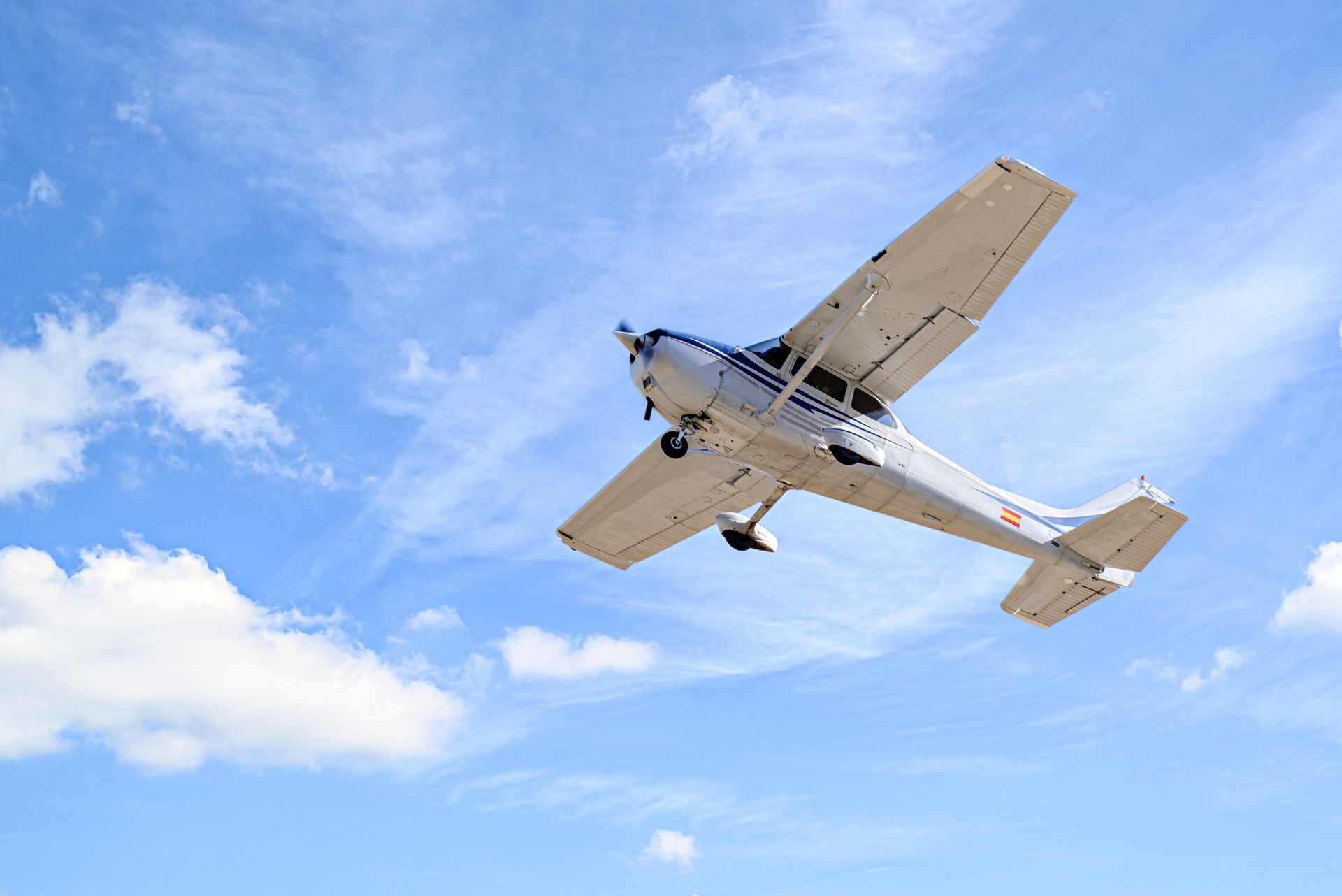Share this Article:

It’s important to know the “ins” and “outs” of aviation before you take to the skies – and the Automatic Dependent Surveillance (ADS) broadcast standard is the surveillance system that’s used for the vast majority of aviation around the world. There’s both an ADS B in and an ADS B out that pilots should be aware of before they get behind the controls of any aircraft – and as of January 2020, ADS-B Out is a requirement for many aircraft and airspaces where they’re flown.
In this post, we’ll dig deeper into the key differences and similarities between ADS B in and out as it pertains to broadcasting aircraft position. Read on for more information or contact J.A. Air Center today.
What is ADS-B Out?
ADS-B Out broadcasts an aircraft’s GPS location, altitude, and ground speed once per second to air traffic controllers and other aircraft. The major benefit of this broadcast standard is that air traffic control can track the precise location of aircraft via GPS, rather than relying solely on radar.
Radar technology performs its sweep for aircraft positioning every 5 to 12 seconds, while the ADS-B broadcast can provide this data, updating every second. Another benefit of the ADS-B broadcast is that the ground stations it communicates with are smaller and can be placed in more flexible locations compared to radar towers. Radar’s radio waves also have limitations in terms of travel distance and penetrating solid objects or certain terrains.
The FAA requires ADS-B Out capability in the continental United States in specific airspace designated by FAR 91.225. This includes Class A, B, and C airspace; Class E airspace at or above 10,000 feet MSL, excluding airspace at and below 2,500 feet AGL; within 30 nautical miles of a Class B primary airport (the Mode C veil); above the ceiling and within the lateral boundaries of Class B or Class C airspace up to 10,000 feet; and Class E airspace over the Gulf of Mexico, at and above 3,000 feet MSL, within 12 nautical miles of the U.S. coast. At this time, only the United States allows the 978UAT datalink for ADS-B Out. If you plan to fly in ADS-B airspace outside of the United States, a 1090ES datalink—using a Mode S Extended Squitter transponder—will be required. The list of countries with ADS-B Out requirements and proposals is growing, so it is important to stay informed about international requirements.
For more information on ADS-B Out requirements and installation, contact J.A. Air Center today.
What is ADS-B In?
With ADS-B In, an aircraft is providing its information to other aircraft and the control tower. With ADS-B, pilots receive broadcast information from other aircraft and the ground network. This helps with situational awareness while flying and can make for a safer overall flight.
Unlike ADS-B Out, ADS-B In is not a requirement for certain types of aircraft and certain spaces – but incorporating it can significantly enhance safety by receiving information from other aircraft and data from the ground network about traffic, weather, and more. There’s data to back up the safety benefits of flying with ADS-B In. According to a study that analyzed accident data from 2013 through 2017, accident rates were significantly reduced – up to 60 percent – for aircraft that had ADS-B implemented.
ADS-B In capability requires an applicable ADS-B receiver, a data processing application, and a cockpit display.
Key Terms to Know
There are various key terms that everyone should know related to the types of signals that aircraft send and receive – and how they send and receive them. Here’s a closer look at some of them:
Ground Network
The ground network refers to an advanced system of cellular towers designed to transmit signals to an aircraft. It’s a land-based infrastructure that helps transmit, route, and send and receive data to an aircraft.
ADS-R (Automatic Dependent Surveillance – Rebroadcast)
ADS-R is designed to relay any ADS-B information from aircraft broadcasting on one link to an ADS-B-equipped aircraft that’s broadcasting on another link.
TIS-B (Traffic)
TIS-B stands for “Traffic Information Services” broadcast. It’s a service that offers aircraft equipped with ADS B In and Out information about aircraft that are not outfitted with ADS-B. It can provide information about an aircraft within a 15-mile radius and up to 3,500 feet surrounding the aircraft’s position.
FIS-B (Weather)
FIS-B is the Flight Information Services broadcast, which helps provide pilots with weather and other data as they fly. It is broadcast on the UAT frequency, but not on the 1090MHz frequency.
What is Dual Link ADS-B in Capability?
Dual-link ADS-B refers to the ability to see all ADS-B-equipped aircraft within a certain area. There are several benefits associated with dual-link ADS-B.
Benefits
- Weather and air traffic information
- Graphical imagery
- Valuable flight data and information
- Improved safety
Key Takeaways for ADS-B In & Out
ADS-B In and Out are both key broadcast standards that can provide more data and information to pilots and ground control so that the skies remain safe and planes are flown more efficiently. ADS-B Out is mandatory for certain types of aircraft and aircraft that fly in certain spaces, while ABS-B In is not mandatory, but can be highly beneficial for pilots.
Both ADS In and Out can significantly help with situational awareness and permit a safer overall flight. These broadcast standards can also help planes transmit information faster so that other pilots are more aware of location and data, and so ground control can advise their flight path better.
Contact J.A. Air Center Today
For more information on the ADS-B In and Out broadcast standards, contact J.A. Air Center today. As the Chicago area’s premier FBO and general aviation facility, we also perform all different types of avionic installation and repair and can get your ADS-B broadcast system up and running so that it works well for you and for others too. Contact us to learn more or to schedule a service order today.




